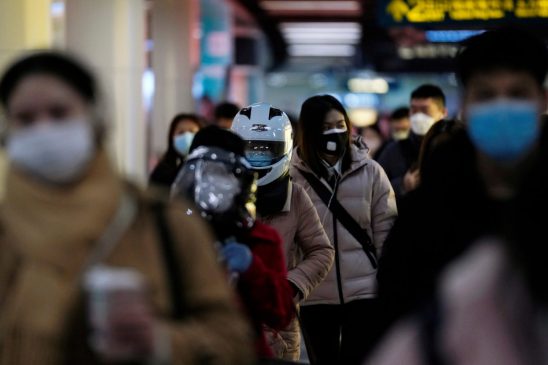- Coronavirus is creating an untenable situation for scores of people but there are some silver linings.
- Pollution in China is on the decline with coronavirus causing business disruptions. Millions of people are also being quarantined.
- Stocks may be recovering today, but bargains still abound.
The coronavirus outbreak is causing panic worldwide, sending stocks plummeting and scores of consumers stockpiling everything from hand sanitizer to water. At last count, the virus has killed more than 3,000 people and has infected 88,000 across the globe. Millions are living under quarantine.
There’s not much to be optimistic about against that backdrop. But there are a handful of silver linings. They may prove to be short-lived as life goes back to normal once the virus is contained. For now, coronavirus is positively impacting the environment, investments and the way we work.
1. Pollution Is Down in China
When it comes to global warming, China has long been ground zero. It has gotten so bad it’s even blocking sunlight from reaching solar panels. That’s where coronavirus comes in.
NASA and the European Space Agency pollution monitoring satellites detected a surprising thing: a “significant” decrease in nitrogen dioxide over China. Evidence points to coronavirus as the culprit.
Coronavirus emerged in Wuhan, China at the end of 2019. By Jan. 23, public transportation in China in and out of Wuhan was halted and businesses in the area were shuttered. The satellite maps captured the impact those moves had on the environment.
The drop in pollution was most evident in Wuhan initially but NASA scientists found the reduction spread across the country. It did occur during the Lunar New Year celebrations, which typically brings a reduction of pollution as factories and businesses close for the week-long celebration. But pollution typically increases after that. Not this time because of coronavirus quarantines and business disruptions.
2. Stocks Are On Sale
As long-term investors have know, panic is not the way to earn returns in the stock market. Yet that’s what most tend to do in times of turmoil and coronavirus isn’t an exception.
Yes, stocks are recovering Monday, but they took a bad beating last week. Some Wall Street pundits including Goldman Sachs warned coronavirus will spark the recession the markets have been waiting for, while others weren’t so convinced. Bulls view it as a buying opportunity.
For investors wanting to get a piece of some of the more pricey tech stocks, coronavirus presents an entry point. Apple (NASDAQ:AAPL) is a perfect example. Despite a huge sell-off last week, Wall Street firm Oppenheimer raised its price target on Apple’s stock to $320.
The firm thinks Apple’s business will be back on track by the second half of this year and urged investors to buy into the weakness.
Apple isn’t the only stock that has tanked. For investors who believe the world will quickly recover from coronavirus, bargains abound.
3. Working At Home Becomes More Of The Norm
Working at home is a coveted perk for scores of people yet it’s still not commonplace. According to U.S. Census data as of 2018, about 3.4% or 4.7 million people work from home at least half of the time. That’s grown 173% between 2005 and 2018 but it’s still a tiny slither of workers. Coronavirus is changing that, at least on a temporary basis.
Sentieo, the financial data analysis company, found the number of conference call transcripts from publicly traded companies mentioning work from home or working from home has surged. So far there were 65 different calls where that was discussed. In April 2018, working at home was only mentioned 11 times. There wasn’t a coronavirus back then either.
Pollution will likely pick up once people are free to roam again in China and stocks might get pricey again. But the work at home trend could continue as companies come up with strategies to protect their global workforce.
Disclaimer: The opinions expressed in this article do not necessarily reflect the views of CCN.com.
This article was edited by Sam Bourgi.
Last modified: March 2, 2020 8:28 PM UTC




